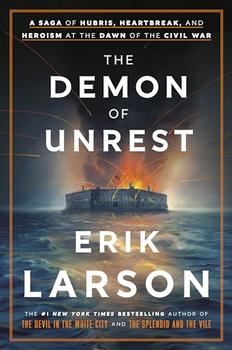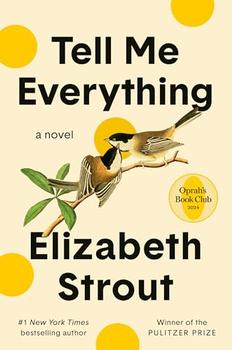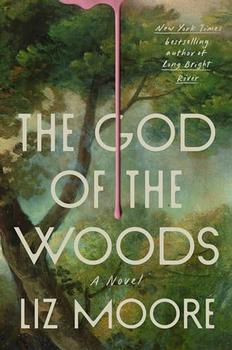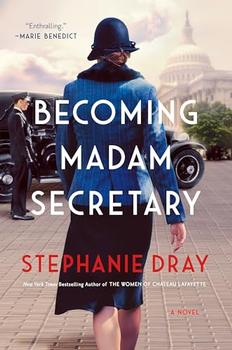Summary | Excerpt | Reading Guide | Discuss | Reviews | Beyond the book | Read-Alikes | Genres & Themes | Author Bio
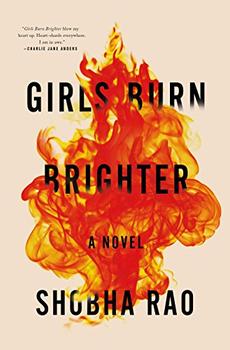
A searing, electrifying debut novel set in India and America, for readers of Rupi Kaur, about the extraordinary bond between two girls driven apart by circumstances but relentless in their search for one another.
Poornima and Savitha have three strikes against them. They are poor. They are driven. And they are girls.
When Poornima was just a toddler, she was about to fall into a river. Her mother, beside herself, screamed at her father to grab her. But he hesitated: "I was standing there, and I was thinking…She's just a girl. Let her go…That's the thing with girls, isn't it…You think, Push. That's all it would take. Just one little push."
After her mother's death, Poornima has very little kindness in her life. She is left to take care of her siblings until her father can find her a suitable match. So when Savitha enters their household, Poornima is intrigued by the joyful, independent-minded girl. Suddenly their Indian village doesn't feel quite so claustrophobic, and Poornima begins to imagine a life beyond the arranged marriage her father is desperate to secure for her. But when a devastating act of cruelty drives Savitha away, Poornima leaves behind everything she has ever known to find her friend.
Her journey takes her into the darkest corners of India's underworld, on a harrowing cross-continental journey, and eventually to an apartment complex in Seattle. Alternating between the girls' perspectives as they face ruthless obstacles, Girls Burn Brighter introduces two heroines who never lose the hope that burns within them.
1
Poornima never once noticed the door of the temple. Neither did Savitha. But the temple watched them closely, perched as it was on the mountain that towered over Indravalli. The village itself was near the banks of the Krishna River, a hundred or so kilometers inland from the Bay of Bengal. Though it was situated in a level valley, the hamlet was shadowed by one of the largest mountains in Andhra Pradesh, called Indravalli Konda, with the temple halfway up its eastern face. It was painted a brilliant white and looked to Savitha like a big boll of cotton. To Poornima, the temple looked like the full moon, perpetually embraced by the sky and the branches of the surrounding trees.
Poornima was ten years old when she stood outside her family's hut, staring at the temple; she turned to her father, who was seated on the hemp-rope cot behind her, and asked, "Why did you and Amma name me after the full moon?" Her mother was sitting at the loom, working, so Poornima didn't want to ...
Here are some of the comments posted about Girls Burn Brighter in our legacy forum.
You can see the full discussion here.
Are there examples in Poornima's story when she does take what she isn't supposed to? How does she exercise control over her own life?
From birth Poornima is marinated in a sauce that leaves her believing that she is entitled to nothing, not even her own life. I wept at her father’s admission that he could have as easily killed her as save her when she was a toddler. So as soon as ... - donnac
Did Poornima's and Savitha's stories change the way you think about issues such as rape, domestic violence, prostitution, sex trafficking, and abuse?
Yes, reading the book did change my thinking about sex trafficking and other such offenses because of the scene when one of the girls agreed to the amputation of her arm. I cannot imagine agreeing to such a horrific act in any situation; however, the... - judyg
Did you find the novel's ultimate message to be at all optimistic or hopeful? Why or why not?
In the end, I found hope and optimism because they were reuniting, or at least I am assuming the reunited. So, I had hope. It was a difficult read with all the tragic things these girls went through. - JulieAB
Discuss the owl's words. What does this novel have to say about willpower versus fate or coincidence?
Perhaps the acceptance of fate is showcased as a cultural value. India as reflected in this novel has several restrictions based on birth that become restrictive on the life a person can live. All cultures have these so ingrained that many people ... - paulagb
Do you think Poornima and Savitha are "swallowed whole" by their experiences? Why or why not?
I think Savitha was almost swallowed whole with her being rape again but this time in America. When Savitha was in the bathroom, the toilet sounds brought her some comfort like it did before. I wonder is that part of the reason she stayed in the ... - alwaysdaddygirl
Girls Burn Brighter is an extraordinary and heart-rending tale of two girls with all the odds against them, who nevertheless find a way to control and shape their own destiny. With vivid language and breathtaking sincerity, Shobha Rao weaves together the lives of Poornima and Savitha, pitting the two girls' friendship against the world, and proving that power can be taken—as well as granted...continued
Full Review
(507 words)
This review is available to non-members for a limited time. For full access,
become a member today.
(Reviewed by Grace Symes).
 Charlie Jane Anders, author of All the Birds in the Sky
Girls Burn Brighter by Shobha Rao blew my heart up. Heart-shards everywhere. I am in awe of the warmth and humanity in this book, even as it explores some incredibly dark places.
Charlie Jane Anders, author of All the Birds in the Sky
Girls Burn Brighter by Shobha Rao blew my heart up. Heart-shards everywhere. I am in awe of the warmth and humanity in this book, even as it explores some incredibly dark places. Claire Cameron, author of The Bear and The Last Neanderthal
This novel burnt up my weekend. With beautiful language, warm friendships, and vivid images, once I started reading I could not stop. It’s a story of struggle and survival. Female friendship is the lifeline.
Claire Cameron, author of The Bear and The Last Neanderthal
This novel burnt up my weekend. With beautiful language, warm friendships, and vivid images, once I started reading I could not stop. It’s a story of struggle and survival. Female friendship is the lifeline.In Girls Burn Brighter, the charkha, a kind of spinning wheel, is a means of self-sufficiency and independence for Poornima and Savitha. Savitha carries the scraps of the sari she made for Poornima across the world, as a reminder of the simple happiness the two girls found when weaving together.
The charkha is one of the oldest known forms of the spinning wheel, originating in India between 500 and 1000 CE. It replaced the previous method of hand-spinning with a spindle. With the invention of the charkha, the spindle could be rotated by a large wheel turned by hand, resulting in spun yarn that could then be wound on to the spindle. The charkha was often a woman's only source of livelihood, allowing her to work from home and look after ...
This "beyond the book" feature is available to non-members for a limited time. Join today for full access.

If you liked Girls Burn Brighter, try these:

by Marjan Kamali
Published 2025
From the nationally bestselling author of the "powerful, heartbreaking" (Shelf Awareness) The Stationery Shop, a heartfelt, epic new novel of friendship, betrayal, and redemption set against three transformative decades in Tehran, Iran.
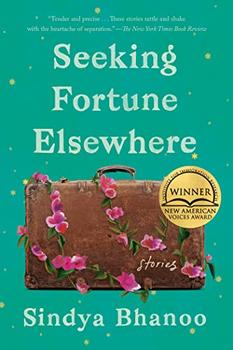
by Sindya Bhanoo
Published 2023
These intimate stories of South Indian immigrants and the families they left behind center women's lives and ask how women both claim and surrender power - a stunning debut collection from an O. Henry Prize winner.
